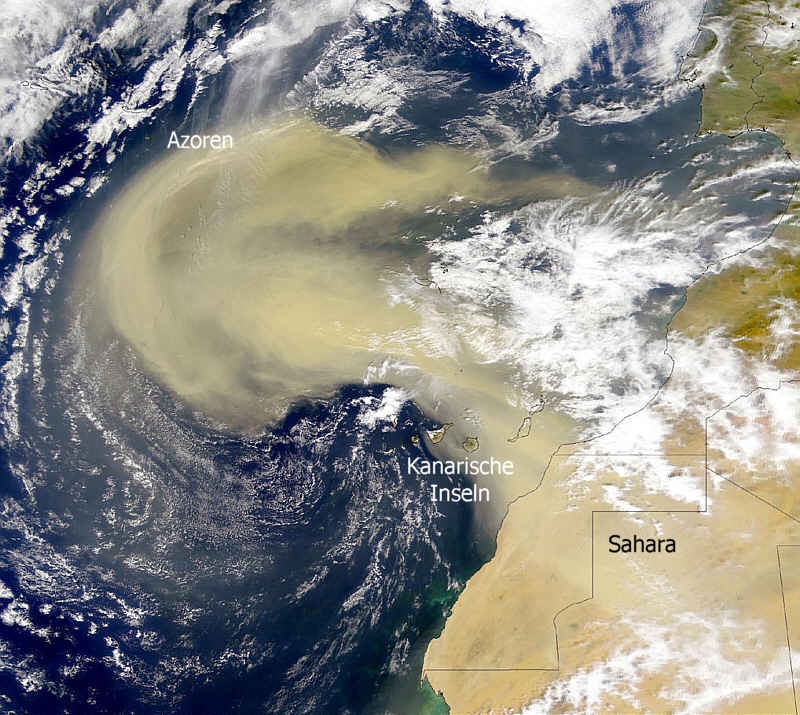You could be forgiven for thinking that Mallorca wanted to match the color of the sandstone houses in its old town - or at least the cars and terraces. Because just in time for every Sahara dust event, the island shines in a uniform shade of brown. The latest case? An impressive dust cloud over 700 kilometers long, which was captured by the European Sentinel-3 satellite on 14 November 2024. The sand traveled from Algeria across the Mediterranean to the Balearic Islands - and once again caused dusty roads, windows and a slightly sore throat.

Sand instead of sun: welcome to a dusty paradise
As idyllic as the idea of bright sunshine over the Mediterranean is, the Saharan dust keeps hitting the reality button. Houses, streets and cars - everything is covered in a fine brown layer. While holidaymakers "beautify" their selfies with a filter, the locals tend to think about how many coins they should have ready for the next car wash.
The health authorities also warn that the fine sand in the air not only impairs visibility, but also the air we breathe. This can be a real burden for people with respiratory diseases. The recommendation is to close the windows and avoid physical activity - so much for the Mediterranean outdoor lifestyle.
Saharan dust: an old acquaintance that comes more and more often
The Mallorcans know that Saharan dust is not a new phenomenon. But the frequency has increased. In 2014, there were only two days with the infamous "muddy rain", in 2022 it was 32 days. And according to data from the Spanish Ministry of Ecological Transition, dust particles hovered over the Balearic Islands on 20 percent of days between 2009 and 2018. Every fifth day a small foretaste of a sandy apocalypse.
A look into the future: Can Copernicus help?
The European Sentinel-3 satellite of the Copernicus program closely monitors these dust events. In addition to spectacular images that are perfect for social media, the program also aims to provide data for better predictions. The aim is to provide timely warnings and long-term indications of climate change, which could exacerbate such phenomena.
The effects of climate change on Mallorca
Why are these sandstorms becoming more frequent? The warming of the Sahara and changing wind currents are contributing to more and more dust being whirled up and hitting the Balearic Islands. Mallorca, in the middle of the Mediterranean, lies directly in the path of these particles. And as the sand settles on the windows, the question remains: how long can we get used to these new "visitors" before the islanders have to do more than just mop?
Practical tips for dusty days
For all those who cannot avoid being outdoors: A mask can help to avoid breathing in the fine particles. Air purifiers for the home and regular window cleaning are also useful. And if you want to protect the environment, you should think twice about whether the next car wash is really necessary - the next sandstorm is sure to come.
A dusty appeal
The dusty days are not only a nuisance for residents, but also a wake-up call. Mallorca must adapt to the fact that these events will become more frequent - and look for sustainable solutions to slow down climate change and make the island more resilient. Will they succeed? At least the sandy beaches don't seem to have a problem with their extension by Saharan dust.







0 Comments